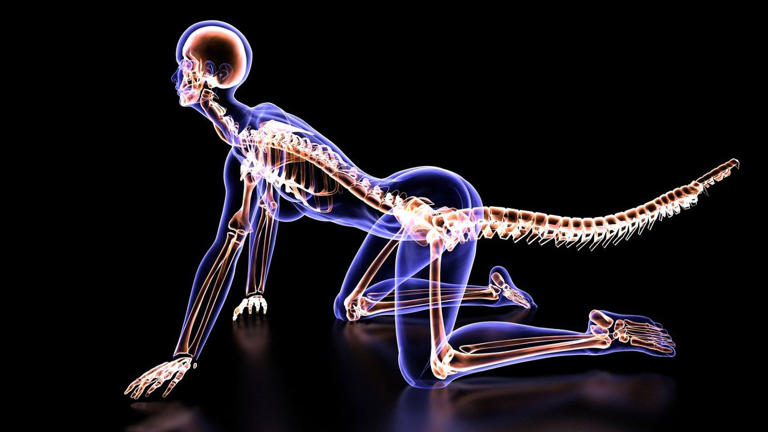Around 25 million years ago, an evolutionary split occurred between our ancestors, the precursors of humans and apes, and monkeys, resulting in the loss of tails in our lineage. However, the genetic mutation responsible for this significant transformation has remained elusive until now.
In a new study published in Nature, researchers unveiled a unique DNA mutation linked to the disappearance of ancestral tails. This mutation resides within the TBXT gene, which plays a role in tail length regulation in tailed animals.
The journey towards this remarkable discovery began when Bo Xia, the primary author of the study, a graduate student at New York University and now a principal investigator at the Broad Institute, injured his tailbone and became intrigued by its evolutionary origins.
Itai Yanai, scientific director of the Applied Bioinformatics Laboratories at NYU Langone Health and a senior author of the study, praised Xia’s innovative perspective, noting, “Bo is really a genius because he looked at something that thousands of people, at least, must have looked at before — but he saw something different.”
Over millions of years, genetic changes drive animal evolution, ranging from subtle alterations to more intricate modifications. One such mechanism involves Alu elements, repetitive DNA sequences unique to primates, which can introduce variability by inserting themselves into the genome.
In the latest study, researchers identified two Alu elements within the TBXT gene exclusive to great apes, absent in monkeys. Interestingly, these elements reside in introns, sections of DNA flanking exons that were traditionally deemed non-functional “dark matter.” However, when the TBXT gene produces RNA, the repetitive nature of Alu sequences causes them to bind together, resulting in the removal of an entire exon during RNA splicing.
Experimentation involving the introduction of these Alu elements into mice revealed a loss of tails, mirroring the evolutionary transition observed in humans and apes. Notably, this finding supports the hypothesis that tail loss facilitated the evolution of bipedalism in humans, a crucial adaptation.
Moreover, mice with truncated tails exhibited a higher incidence of spina bifida, a neural tube defect, shedding light on potential unintended consequences of TBXT deficiency.
Yanai expressed astonishment at the far-reaching implications of their discovery, remarking, “We’re now walking on two feet. And we evolved a big brain and wield technology, all from just a selfish element jumping into the intron of a gene. It’s astounding to me.”
This groundbreaking revelation not only deepens our understanding of evolutionary biology but also opens new avenues for genomic analysis, as alternative splicing mechanisms may underlie various evolutionary changes in traits.



